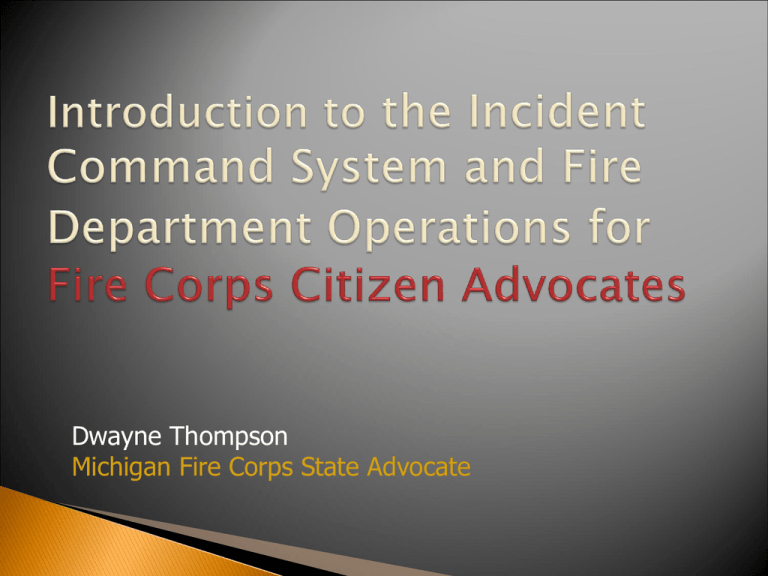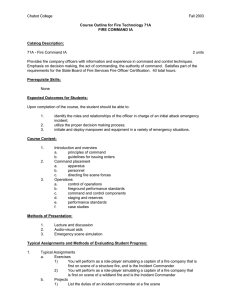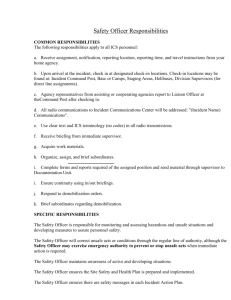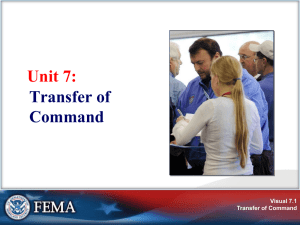Command - Fire Corps
advertisement

Dwayne Thompson Michigan Fire Corps State Advocate 1. 2. Personnel and Equipment Management System developed from California wild land fires in the 1970’s based on these two principles: ACCOUNTIBILTY EACH PERSON HAS ONE BOSS (Unity of Command) Command (IC) Command (IC) Command (IC) Command Staff Operations (Functional Units) Operations Each person in the system only reports to one person above them. (Functional Units) Branch (Functional Units) Branch (Functional Units) With Good Communication Common terminology Keep people informed NO FREE-LANCING No “heroes” or cowboys wanted Be where you are suppose to be Do the job assigned Communicate the results Coordinate and direct all incident activities including developing and implementing a strategic plan Command (IC) Command (IC) Command (IC) Command Staff Operations (Functional Units) Operations (Functional Units) Branch (Functional Units) Branch (Functional Units) Also called Incident Commander (IC) May have a Command Staff or Unified Command (only one command) Green Light / IC Flag Safety Officer Liaison Officer Public Information Officer Scribe to Command COMMAND - Incident Commander (IC) FINANCE LOGISTICS OPERATIONS PLANNING Has the responsibility of tracking all costs and financial aspects of the incident. Usually will only be activated on largescale, long-term incidents. Support Branch – supplies, facilities, ground support, equipment, etc. Service Branch – medical, re-hab, communications, food services, etc. Reports directly to the IC and responsible for managing all operations that directly affect the primary mission of eliminating the problem. Staging is here. Responsible for the collection, evaluation, dissemination, and use of information concerning the development of the incident. Also, tracking the status of all resources assigned to the incident. They become the responsibility of the Incident Commander. COMMAND DIVISION GROUP SECTOR SUPERVISOR INCIDENT ACTION PLAN RESOURCES STAGING IMS / ICS should be initiated by the first person on the scene of an emergency. What has occurred? What is the current status of the emergency? Is there anyone injured or trapped? Can the emergency be handled with the resources on scene or en route? Does the emergency fall within the scope of the individual’s training? If no life-threatening situation demands immediate action, the IC should begin to formulate an Incident Action Plan. Be prepared to transfer to next-arriving person with higher level of expertise or authority Face-to-face is best Command can only be transferred to someone who is on scene Give a Situation Status Report Assisting with tracking at Staging Assisting Command Staff as a scribe Setting up and running the Re-hab Area Diverting traffic Other duties as assigned Following ICS rules – No Free-lancing and waiting patiently to be deployed











